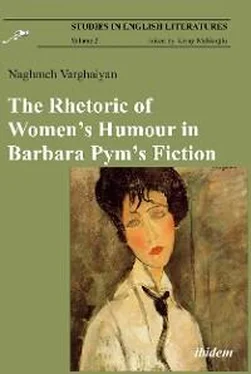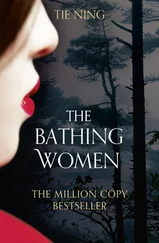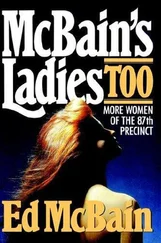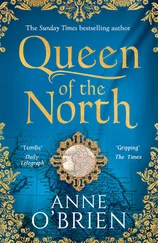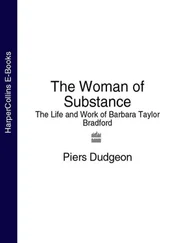Theorists and humourists throughout history, however, have only paid attention to men’s humour. This intellectual subordination of women was mostly due to the fact that, as Virginia Woolf states in A Room of One’s Own “nothing could be expected of women intellectually” (55) since numerous intellectuals believed in “the mental, moral and physical inferiority of women” (31). Likewise, as Regina Gagnier suggests, despite the fact that some recent works address the effects of gender on humour, “historically theorists of humour have been men, and they have seldom considered the role of gender in humor” (136). Barreca also asserts that male theorists such as Freud and others before him misinterpreted the specificity of women’s humor as humourlessness: “What early theorists like Freud failed to understand is that women do not lack a sense of humour; they just find different things funny” (qtd. in Bennett 37).
There has been a long-standing claim against feminists’ lack of a sense of humour. As Barreca argues, the belief that women lack a sense of humour is specific to men only, since “women typically have hidden this trait from men in order to appear traditionally ‘feminine.’” Accordingly, she emphasises that “it is no secret to women that women have a sense of humor” (Snow White 103). Thus, a theory of women’s humour is indeed necessary to analyse the true nature of the humour in the works of female writers and to prevent misinterpretations of such texts. As Gail Finney sums up, in addition to Judy Little’s work, the works of Walker, Barreca, Gillooly, Sochen, and Zita Dresner have “effectively exploded the myth that women have no sense of humour” (1).
The comedy present in Pym’s work holds a special place in literature and can be classified as high comedy. 3Mason Cooley names “realism and comedy” amongst the most significant ingredients of her fiction (“Barbara” 384). Her specific type of comedy is mostly marked by indirectness and subtlety. While mainly rendering the lives and traditions of middle-class ordinary people, Pym depicts them and the human condition as “shot through with the antic spirit of comedy” (Cooley “Barbara” 384). By experience, Pym was entirely familiar with the conventions and traditions of the middle classes. Her awareness of the nature of middle-class culture and mentality significantly contributed to her detailed descriptions of middle-class life and people. Moreover, the Pyms were closely associated with the church and the vicarage, or “the vicar and curates” (Long 3). 4
Pym’s novels STG, EW, and JP were published in 1950, 1952 and 1953, respectively, by Jonathan Cape. Following the publication of her sixth novel No Fond Return of Love, a prolonged period of negative critical responses to Pym’s novels began with the publication of her novel An Unsuitable Attachment. This period lasted for fourteen years. Despite suffering from depression and a lack of self-assurance, Pym continued writing several novels including an unpublished academic novel, and The Sweet Dove Died. Pym’s unpublished works were only published after Lord David Cecil and Phillip Larkin in the Times Literary Supplement in 1977 “named her one of the nation’s most underrated novelists” (Bentley et al. 286). Since then, various articles, books and dissertations have been written about her novels. 5
Published in 1950, STG was Pym’s first novel. Her first experience as a novelist was generally favoured by critics and the critical reviews were mostly approving. Some critics connect this novel with the English sense of humour and traditional comedy. Being narrated from an omniscient point of view, the novel, in Long’s words, is “modestly voiced yet sharply focused” (14). STG is mostly considered as one of the most humorous novels of Pym. According to Long, it comprises Pym’s “characteristic ironies, ambivalences, and sense of the ridiculous,” displaying a humour coloured with “gentle malice” (Long 15). Her wit was considered to be subtle and indirect. Long argues that after STG, Pym began to “focus [on] her comic vision” (8). According to Cooley, the novel helped to establish Pym as a successful writer of comedy whose domain extends from “farce to the rarefied mental acrobatics of high comedy” (“Barbara” 367). Pym’s thoughtful employment of wit, as well as the attentive application of comic tactics and strategies contributes to the reversal and parodying of “literary convention” (“Barbara” 367). Critics generally agree that this novel subverts the romantic plot. Cooley, who studied Pym’s comic vision, suggests that this novel “both celebrates and mocks romantic comedy” (“Barbara” 367). Reversing conventional literary structure and subject matter, Pym’s subtle and gentle humour in STG undermines the long-held values of the prevailing patriarchal culture.
Critics also classify Pym’s second novel EW (1952) as a comic work. Here Pym satirises the figure of spinster and the Church of England (Long 15). According to Long, the critical reviews of this novel were exceedingly favourable as they stressed the novel’s brilliant comedy instead of its partial tone of “isolation and loneliness” (15). Cooley argues that Pym in this work effectively surmounts the hard task of accomplishing “comic effects” without breaking up the “realistic surface” (“Barbara” 367).
The first-person narration recounts the story of Mildred Lathbury, a country clergyman’s daughter, who is living alone in a shabby apartment in London. Mildred “establishes the character type of the ‘excellent woman,’ who is at the center of most of Pym’s fiction” (Cooley, “Barbara” 368). However, Marina Mackay suggests that although Pym appears to deride these excellent women, she is in fact “sympathetic” (161) towards them.
JP, Pym’s third novel chosen for this study, is narrated by an omniscient narrator and is mainly about two friends, Jane and Prudence. The mood and setting of this novel, in Long’s words, is “lighthearted yet extremely knowing, and the institution of marriage is examined from within and without.” The novel subverts the romantic plot and is in stark contrast to the “quest for romantic love” (16). According to Cooley, it is “one of Pym’s most purely funny novels. It handles the theme of appearance and reality, convention and fact, in a light and playful way” (“Barbara” 372). Moreover, it “is more obviously ‘literary’ in its inspiration and more explicitly comic” (370). It covers unexampled subjects such as inefficient wives and clergymen, unemotional mothers and egoist male characters.
Pym wrote a number of novels after JP; some of these were published during her lifetime, others posthumously. The experience of working as an editor in an anthropology institute helped her in shaping the subject matter and the characters of Less Than Angels, published in 1955, which primarily deals with the lives of anthropologists.
According to Cooley, most of Pym’s novels written during this era are “in an entirely modern world, postreligious and fragmented.” Human relations are “noncommittal and in flux” (“Barbara” 372). Although Less Than Angels appears to be much gloomier than Pym’s earlier novels, Long asserts that one reviewer’s note on it – a “humorous treatment of the anthropologists” – reminds us of Austen’s “extracting comedy from the dull or pompous’” (16).
Pym’s next novel, A Glass of Blessings (1958), is extensively praised for its singular and mighty comedy. Cooley considers this novel as “the most elegant and gossamer of Barbara Pym’s comedies” (“Barbara” 378). According to Long, Pym with her “faultlessly wry, deadpan humor that is typical of the understated quality of the work,” created one of the most appreciated comic novels. A Glass of Blessings is generally praised by reviewers, in particular for its “brilliant characterisation” and its “sparkling feminine malice” (Long 17).
Читать дальше
